The Axial Skeleton Human Anatomy Review Sheet 8 14
Forth the Centrality of the Axial Skeleton: Bones That Form the Axial Skeleton
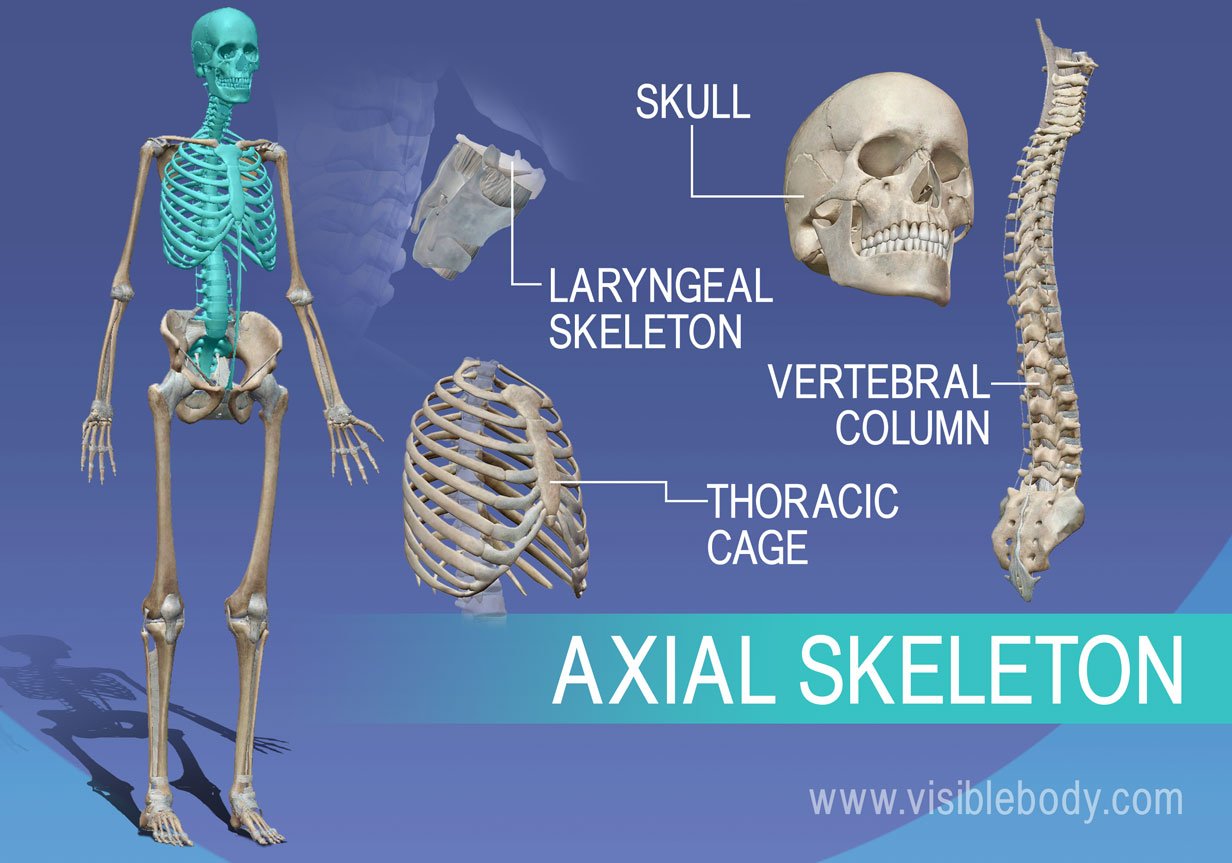
The bones of the human skeleton are divided into two groups. The appendicular skeleton includes all the bones that form the upper and lower limbs, and the shoulder and pelvic girdles. The centric skeleton includes all the basic along the body's long axis. Let's piece of work our way down this centrality to learn near these structures and the bones that grade them.
The axial skeleton includes the bones that class the skull, laryngeal skeleton, vertebral column, and thoracic cage. The bones of the appendicular skeleton (the limbs and girdles) "append" to the centric skeleton.
1. Skull Bones Protect the Brain and Form an Entrance to the Body.
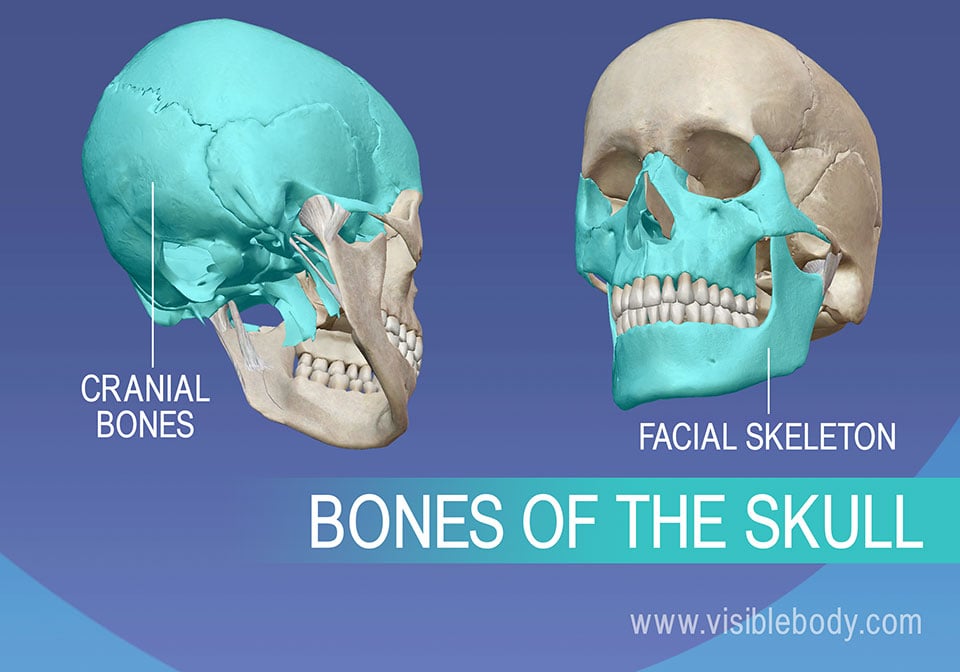
The skull consists of the cranial bones and the facial skeleton. The cranial bones etch the top and dorsum of the skull and enclose the brain. The facial skeleton, as its name suggests, makes upward the face of the skull.
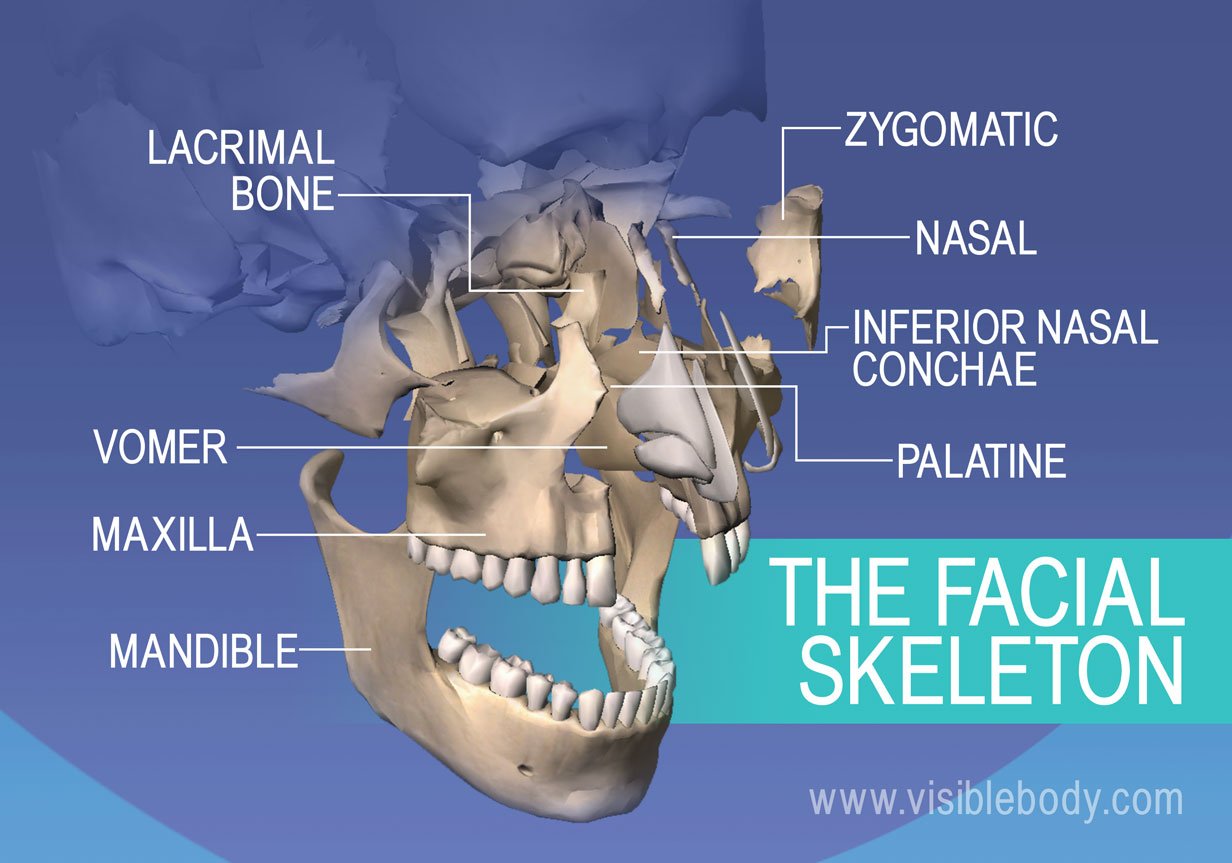 Facial Skeleton
Facial Skeleton
The xiv basic of the facial skeleton form the entrances to the respiratory and digestive tracts. The facial skeleton is formed by the mandible, maxillae (r,l), zygomatics (r,l), and the bones that give shape to the nasal cavity: lacrimals (r,l), nasals (r,l), vomer, palatines (r,50), and the nasal conchae (r,50).
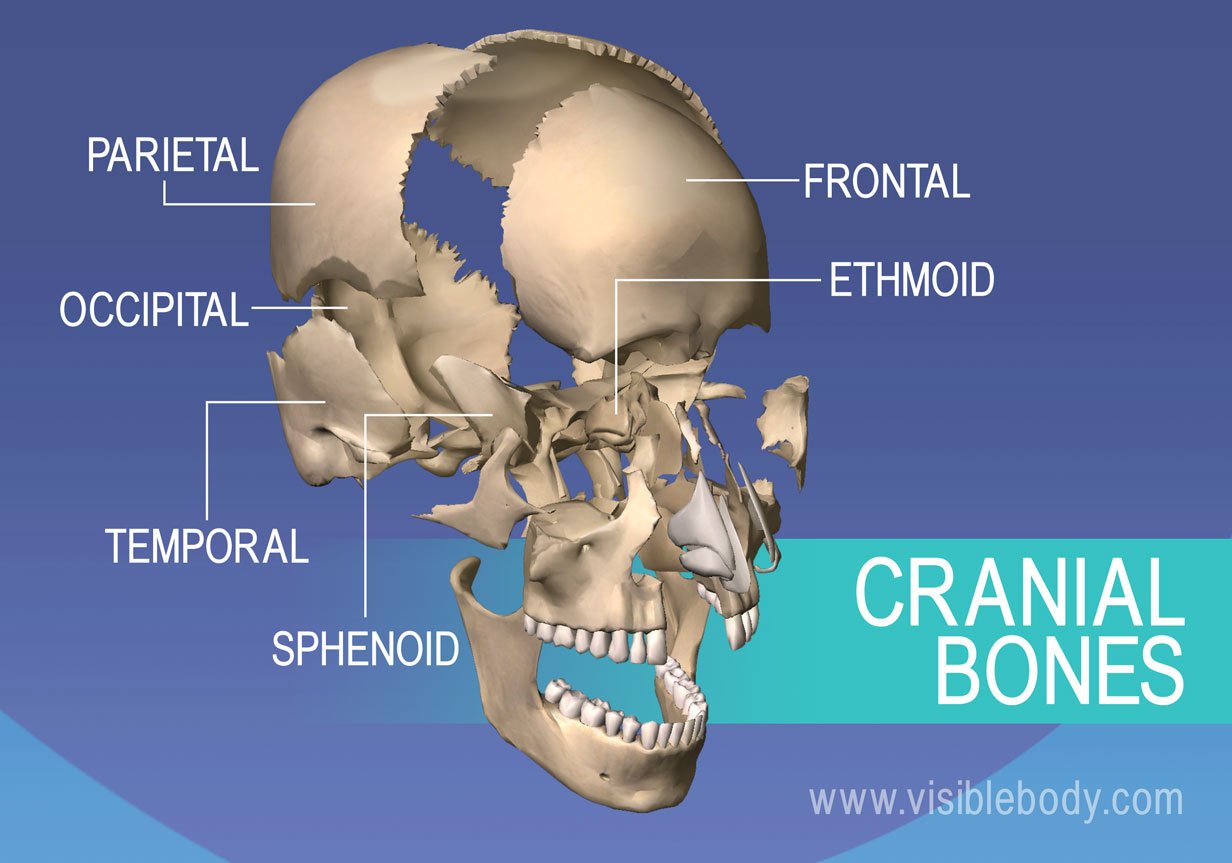 Cranial Bones
Cranial Bones
The 8 cranial bones support and protect the brain: occipital bone, parietal bone (r,l), temporal bone (r,l), frontal bone, sphenoid, and ethmoid.
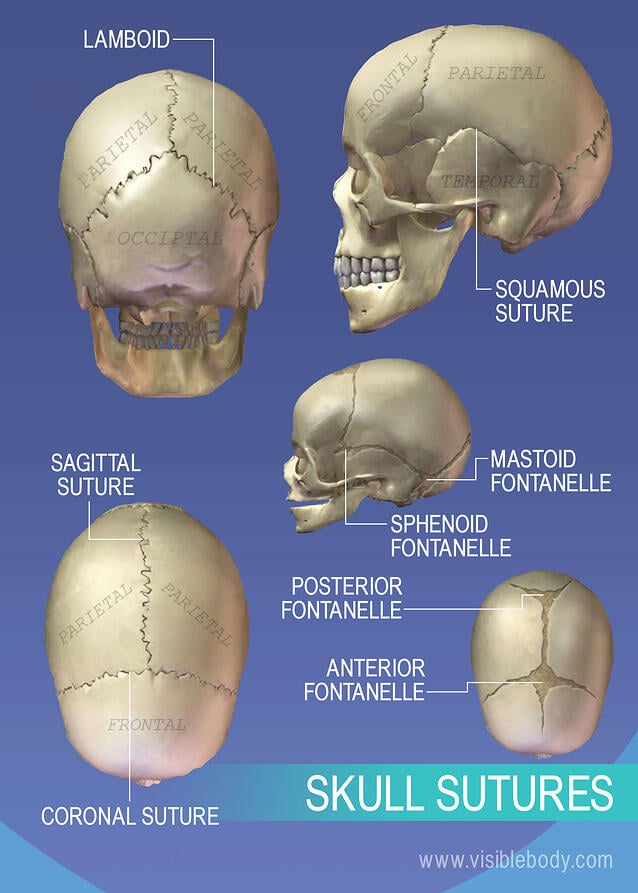 Skull Sutures
Skull Sutures
In fetuses and newborn infants, cranial bones are connected by flexible fibrous sutures, including big regions of gristly membranes called fontanelles. These regions allow the skull to enlarge to accommodate the growing encephalon. The sphenoidal, mastoid, and posterior fontanelles shut later on two months, while the anterior fontanelle may exist for upwards to 2 years. Every bit fontanelles shut, sutures develop. Skull sutures are immobile joints where cranial bones are continued with dense fibrous tissue.
The four major cranial sutures are:
- lambdoid suture (betwixt the occipital and parietal bones)
- coronal suture (between the frontal and parietal bones)
- sagittal suture (betwixt the 2 parietal bones)
- squamous sutures (betwixt the temporal and parietal bones)
two. The Hyoid Bone, Laryngeal Skeleton, and Basic of the Inner Ear Are Commonly Categorized with Skull Basic
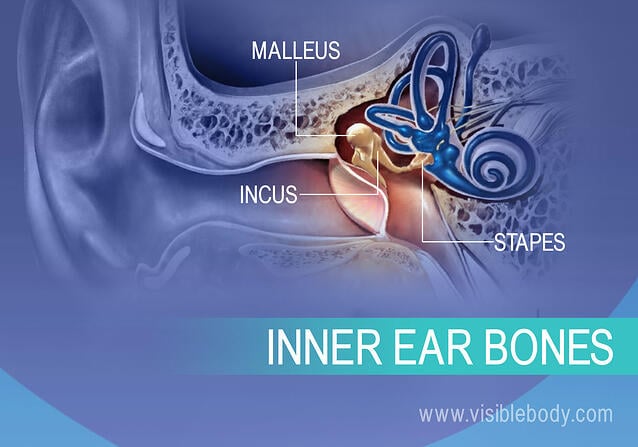 Bones of the Inner Ear
Bones of the Inner Ear
Within the petrous role of the temporal bone are the three smallest basic of the trunk: the malleus, incus, and stapes. These iii basic articulate with each other and transfer vibrations from the tympanic membrane to the inner ear.
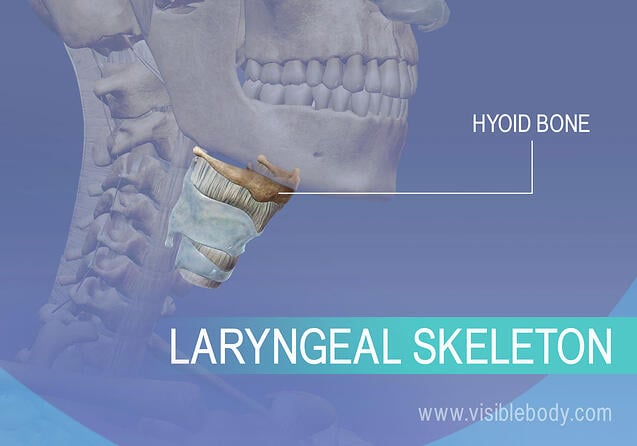 Laryngeal Skeleton
Laryngeal Skeleton
The laryngeal skeleton, likewise known every bit the larynx or voice box, is composed of 9 cartilages. It is located between the trachea and the root of the tongue. The hyoid bone provides an anchor signal. The movements of the laryngeal skeleton both open and close the glottis and regulate the degree of tension of the song folds, which–when air is forced through them–produce song sounds.
3. The Bones of the Vertebral Column: The Vertebrae, Sacrum, and Coccyx
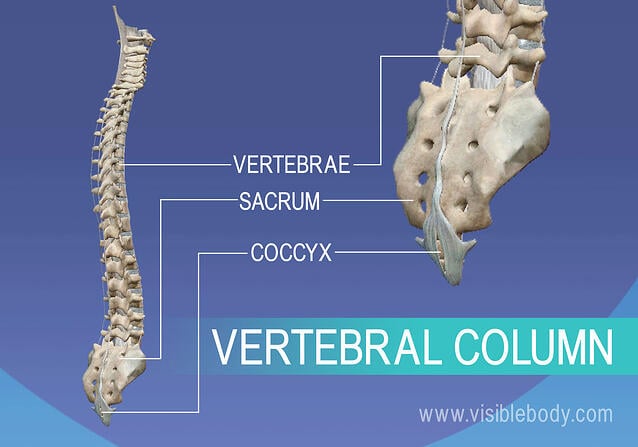
The vertebral cavalcade is a flexible column formed past a series of 24 vertebrae, plus the sacrum and coccyx. Commonly referred to as the spine, the vertebral column extends from the base of operations of the skull to the pelvis. The spinal cord passes from the foramen magnum of the skull through the vertebral canal inside the vertebral column. The vertebral column is grouped into five regions: the cervical spine (C01-C07), the thoracic spine (T01- T-12), the lumbar spine (L01-L05), the sacral spine, and the coccygeal spine.
4. The Bones of the Thoracic Cage Protect Internal Organs
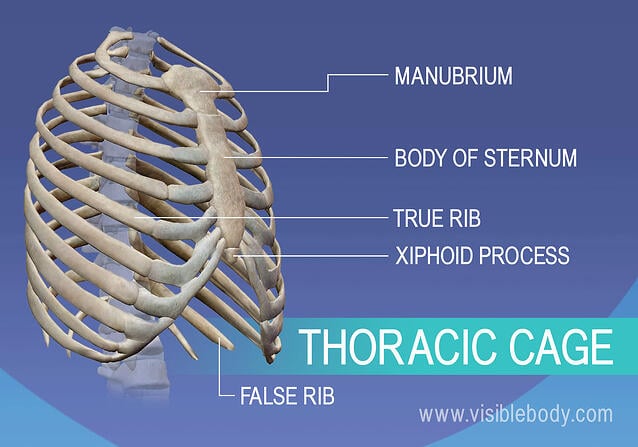
The thoracic cage, formed by the ribs and sternum, protects internal organs and gives attachment to muscles involved in respiration and upper limb movement. The sternum consists of the manubrium, torso of the sternum, and xiphoid process. Ribs i-vii are called true ribs because they articulate directly to the sternum, and ribs 8-12 are known every bit fake ribs.
Download Centric Skeleton Lab Manual
Source: https://www.visiblebody.com/learn/skeleton/axial-skeleton
0 Response to "The Axial Skeleton Human Anatomy Review Sheet 8 14"
Post a Comment